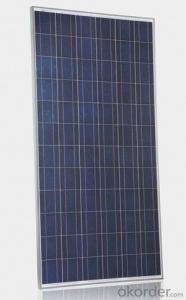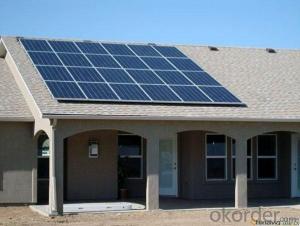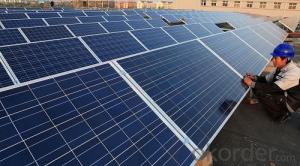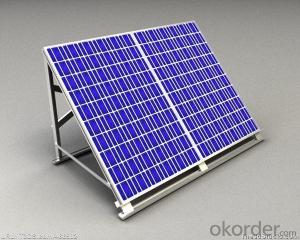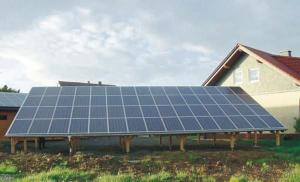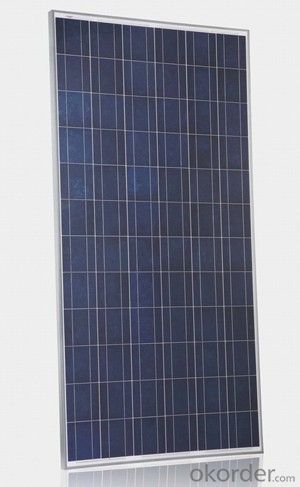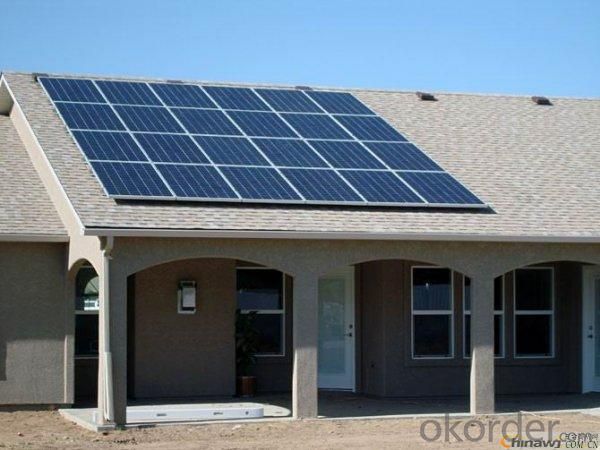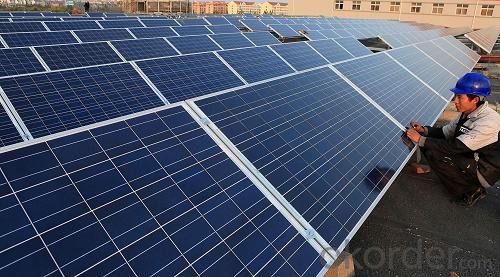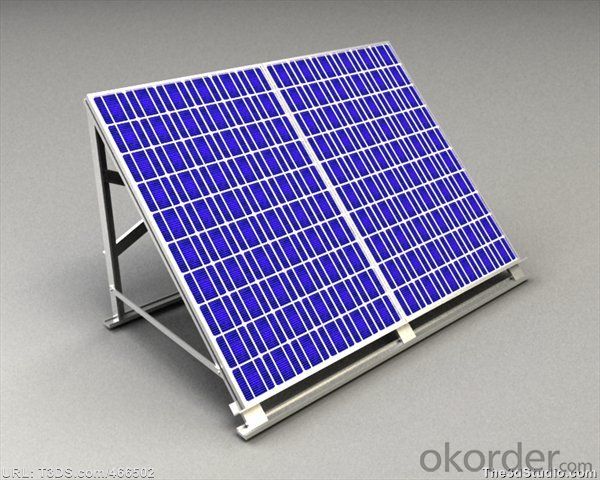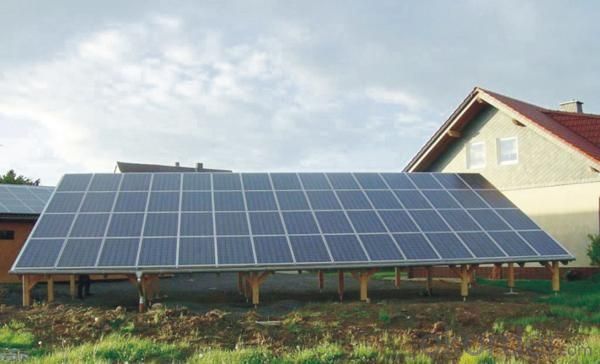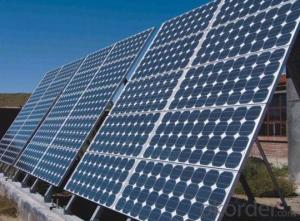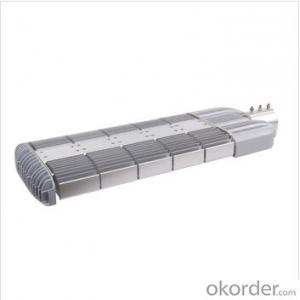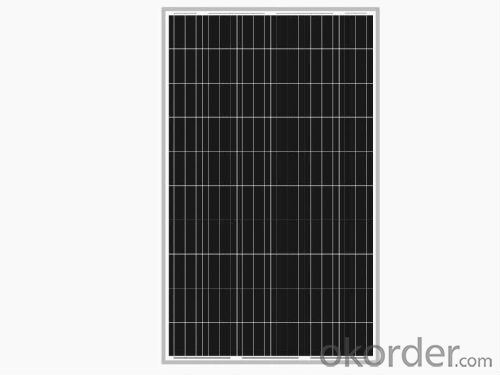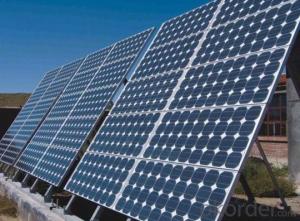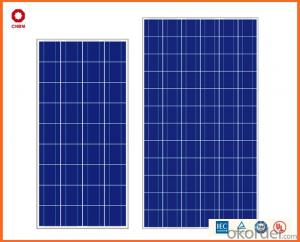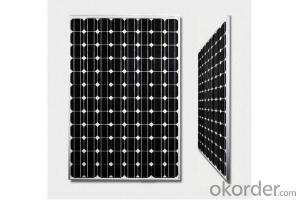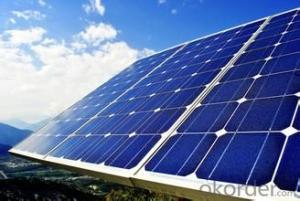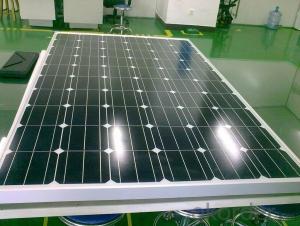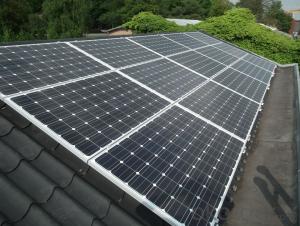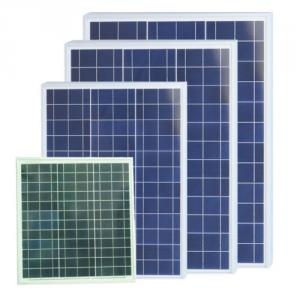Window Solar Panels for Apartments - 250W Poly Solar Panel for Home Use with CE, TUV, UL, MCS Certificates
- Loading Port:
- China Main Port
- Payment Terms:
- TT or LC
- Min Order Qty:
- -
- Supply Capability:
- 10000000 watt/month
OKorder Service Pledge
OKorder Financial Service
You Might Also Like
1.Structure of Solar Module Description
CNBM Solar's photovoltaic module is designed for designed for large electrical power requirement. It is the optimal choice for both on-grid and off-grid power systems. CNBM Solar offers high performance of power per square foot of solar array.
2.Main Features of the Solar Module
Quick Details
| Place of Origin: | Jiangsu China (Mainland) | Brand Name: | CNBM solar | Model Number: | 250w poly solar panels |
| Material: | Monocrystalline Silicon | Size: | 1580x808x35mm | Number of Cells: | 6x12 cells |
| Max. Power: | 200w | Certificate:: | ISO9001/14001,CE/TUV/UL | Color: | Can be black or white |
| Grade: | A grade cells | OEM Order:: | Acceptable | Junction BOX:: | lP65 Ralated/Past the TUV |
Packaging & Delivery
| Packaging Detail: | Pallets |
| Delivery Detail: | 10 days |
3.Solar Module Images
4.Solar Module Specification
Specifications
A cells solar panels:
1.6 years Manufacturer
2.High Efficiency solar Cell
3.25 years Warranty
4.ISO9001/ISO14001/TUV/UL/CE
Quality and Safety:
Rigorous quality control meeting the highest international standards
High-transmissivity low-iron tempered glass, strong aluminium frame
Using UV-resistant silicon
ISO 9001:2008 and ISO 14001:2004
IEC61215, IEC61730, Safety Class Inconformity to CE
Features:
Aesthetic appearance with excellent efficiency based on innovative
photovoltaic technologies
Strong frame, passing mechanical load test of 5400Pa, instead of the normal
2400Pa,to withstand heavier snow load and higher wind-pressure
Warranties:
10 years limited product warranty
15 years at 90% of the minimal rated power output
25 years at 80% of the minimal rated power output
Specificate sheet:
ITEM NO.: | Mono 125*125 cell ,72pcs . Power range from 170Wp-210Wp | ||||||||
Maximum Power(W) | 170 | 175 | 180 | 185 | 190 | 195 | 200 | 205 | 210 |
Optimum Power Voltage(Vmp) | 35.2 | 35.3 | 35.4 | 35.8 | 36.5 | 37.0 | 37.6 | 37.9 | 38.0 |
Optimum Operatige Current(Imp) | 4.83 | 4.96 | 5.09 | 5.17 | 5.21 | 5.28 | 5.32 | 5.41 | 5.53 |
Open Circuit Voltage(Voc) | 44.4 | 44.5 | 44.6 | 44.8 | 45.0 | 45.1 | 45.3 | 45.5 | 45.8 |
Short Circuit Current(Isc) | 5.29 | 5.34 | 5.40 | 5.48 | 5.56 | 5.63 | 5.72 | 5.79 | 5.83 |
Solar Cell: | 125*125 Mono | ||||||||
Number of Cell(pcs) | 6*12 | ||||||||
Brand Name of Solar Cells | JA Cell, | ||||||||
Size of Module(mm) | 1580*808*35 | ||||||||
Cable & Connector Type | Pass the TUV Certificate | ||||||||
Frame(Material Corners,etc.) | Aluminium-alloy | ||||||||
Backsheet | TPT | ||||||||
Cell Efficiency (%) | 16.8% | ||||||||
Weight Per Piece(KG) | 15.0KG | ||||||||
FF (%) | 70-76% | ||||||||
Junction Box Type | Pass the TUV Certificate | ||||||||
Tolerance Wattage(e.g.+/-5%) | ±3%, or 0-3% | ||||||||
Front Glass Thinkness(mm) | 3.2 | ||||||||
Temperature Coefficients of Isc(%) | +0.04 | ||||||||
Temperature Coefficients of Voc(%) | -0.38 | ||||||||
Temperature Coefficients of Pm(%) | -0.47 | ||||||||
Temperature Coefficients of Im(%) | +0.04 | ||||||||
Temperature Coefficients of Vm(%) | -0.38 | ||||||||
Temperature Range | -40°C to +85°C | ||||||||
Surface Maximum Load Capacity | 2400Pa | ||||||||
Allowable Hail Load | 23m/s ,7.53g | ||||||||
Bypass Diode Rating(A) | 12 | ||||||||
Warranty | 100% of 10 years,80% of 25 years. | ||||||||
Standard Test Conditions | AM1.5 , 1000W/m² , 25 +/-2°C | ||||||||
Packing | carton or pallet | ||||||||
1*20' | 12Pallets / 320pcs | ||||||||
1*40'STD | 25 Pallets / 700pcs | ||||||||
Modules Characteristics:
A.High effciency crystalline silicon solar cells.
B.High transmission low iron tempered glass,strong mechanical resistance.
C.Standard waterproof junction box,with bypass diode and MC4 connectors.
D.High endurance to different atrocious weather,warranty reach 30 years above.
E.Custom designed modules according to clients' requirement,we can supply various OEM service.
F.Hold TUV and IEC,CE,ISO approval, can supply various OEM service.
PERFORMANCE:
>> High efficiency,Crystalline solar cells with high transmission and textured glass delivering a module series efficiency of up to 17.4%, minimising
installation costs and maximising the kWh outputof your system per unit area.
>> Power tolerance of +/-3% minimising PV system mismatch losses.
QUALITY & RELIABILITY
>> Robust, corrosion resistant aluminium frame independently tested to withstand wind load of 2.4KPa and snow loads of 5.4KPa ensuring a stable
mechanical life for your modules.
>> Take confidence in our modules with a 5 years limited product warranty and a 25 year limited power warranty as international standard.
>> Modules protected by box during transportation and with 21 modules in a box on-site waste is minimised.
>> Modules independently tested to ensure conformance with certification and regulatory standards.
>> Manufacturing facility certified to ISO 9001 Quality Management System standards.
5.FAQ of Solar Module
1. Q: Do you have your own factory?
A: Yes, we have. Our factory located in Jiangyin city, jiangsu province.
2. Q: How can I visit your factory?
A: Before you take off from your country, please let us know. We will show you the way,or arrange time to pick you up if possible.
3. Q: Could you print our company LOGO on the nameplate and package?
A: Yes, we can do that.
4. Q: Do you accept custom design on size?
A: Yes, if the size is reasonable.
- Q: Can solar panels be used in areas with high levels of sand or dust deposition?
- Yes, solar panels can be used in areas with high levels of sand or dust deposition. However, the accumulation of sand or dust on the surface of solar panels can reduce their efficiency. Regular cleaning and maintenance of the panels are necessary to ensure optimal performance in such environments. Additionally, the tilt and positioning of the panels can be adjusted to minimize the impact of sand or dust deposition.
- Q: Can solar panels be used in conjunction with a backup generator?
- Yes, solar panels can be used in conjunction with a backup generator. This setup is known as a hybrid system. During periods of sunlight, solar panels generate electricity and can power a home or facility. Any excess energy can be stored in batteries or fed back into the grid. When sunlight is insufficient, a backup generator can automatically kick in to provide electricity, ensuring a continuous power supply.
- Q: In some countries where electric generation is low, they are not available easily.
- Believe it or not, solar panels are so expensive in this country because of government subsides. Without market competition, companies have no obligation to compete with each other on price. If our government would stop paying people to buy solar panels and giving solar panel companies tax breaks, companies would be forced to lower their price and raise their quality in order to get you to buy their product. This would be true of oil/gas, corn, soy beans and a number of other companies and products as well.
- Q: Monocrystalline panels are sooo expensive! Thanks for reading.
- image voltaic thermal or warm water beats PV or Photovoltaic on a daily basis. The Mono and Poly are the main conventional. they provide years of provider and function a shown song checklist. they do no longer seem to be very warmth tolerant. production will flow down on warmer day as maximum shrink sheets will instruct. Amorphous Panels are greater warmth tolerant. they're additionally greater valuable at production with ,low easy or in part cloudy days. They produce much less what in keeping with sq. foot and want a larger section. First image voltaic produces those variety of panels. HIT by utilizing Sanyo blends those 2 together to produce a panel with the main suitable of the two structures. All PV is costly. The payoff tiers from 7-2 many years in keeping with many components.
- Q: Can solar panels be installed on a historical building?
- Yes, solar panels can be installed on a historical building. However, the installation process should be carefully planned and designed to minimize any potential impact on the building's historical integrity. It is important to consult with experts and adhere to any local regulations or preservation guidelines to ensure a harmonious integration of solar panels without compromising the building's historical value.
- Q: Okay, I think I understand what I'm doing, but I want to set up some solar panels on the roof of my garage, the building that gets the most sun, and I want to make sure all my math is correct in determining number of megawatts per year. However, my knowledge of electrical terms in quite n00bish, to say the least.Here is what I think I should be doing.The solar cells come at .75 Watts average power.I will install 4 panels of 64 cells each, with a total of 256 cells.
- For comparison, 36 of these make a normal 2V x 50W panel. Note they are not tabbed. This means you have to find a way to connect them yourself. The tabs are probably spot welded on by the suppliers. A supplier below has kits of these with tabs, as needed to connect them together. These are not suitable for grid connect, because the higher voltage needed makes do it yourself panels a dangerous and litigious thing to have on your roof. Maybe you could buy a smaller pack from the link below to compare tabbed and untabbed and work out what to do. Your power calculation is a bit incorrect because the sun is only present some of the time. The 36 cell module would produce 50W when square on to the full sun. The sun may be out for around 2h a day in some places and times of the year. However it is the equivalent of 5h full sun, because of the changing angle throughout the day. Look this up on the internet for your region. Temperate zones may be a lot less. One pack in your link is 36x3 = 08 cells. Thus 50W per pack x 5h a day gives 750Wh per day and 274KWh/y. In reality it will always be less because of regions, weather, clouds, dust, inefficiencies, aging of cells.
- Q: Can someone tell me the average savings you get PER solar panel installed? I do not have the money to invest in a bunch of them at once, so I am forced to buy one at a time, when I have the money. So how much can I expect to save after I buy the first one?
- I am afraid you are in for some disapointment. A typical solar panel might put out something over 00 watts, and cost a pretty big bundle. Then, what would you do with the power? It will be low voltage DC. You could charge a battery, or run a DC appliance. You would get less than ten cents worth of electricity per day. If you wanted to use it for household appliances, you would need an inverter. More big bucks. Type solar panels in the green search box at the top of this page, and read previous Q A. Also do the same on the Internet. Sorry to be a wet blanket.
- Q: how the energy of load connected to solar PV measure.?Want too the basic idea about it.The role of current flowing thrugh the load?Can u explain with example..can explain simply?Im not an electrical student so explain very basics
- A solar panel is made up of solar cells. Each cell produces about 0.5 to 0.6 volts. Cells are connected in series, like the batteries in a flashlight. Enough cells are placed in series to produce the desired voltage. Cells produce very little current, so many strings of cells are connected in parallel to produce sufficient current. The output is direct current (DC), like that from a battery. A home solar system needs alternating current (AC), so an inverter is used to change from DC to AC. Some systems have batteries for backup power. In these some of the DC output is used to keep the batteries charged. Systems are measured in kilowatts. System sizes are chosen to meet the demands for electricity. My system has a 6 kilowatt (kW) rating. The true output is more like 4. Now that you know this much you can Google SOLAR SYSTEMS to learn more.
- Q: are there solar panel that work without the sun?
- There cannot be a solar panel which works without sun light. But solar panels can work without sunlight. For example you would have seen the battery less calculators which work on solar power. they work in the night too with enough light coming from the bulbs in the room. So the answer to your question in yes. But for generating power we have to have a source which is free and we cannot put the panel in lighted area, which will make is not economical since the nett power obtained will be negative.
- Q: Can anyone give me a simple but informative explanation on how solar panels produce electricity/power? Thank you!
- The sun produces energy. When that sunlight hits most surfaces, it causes that surface to heat up. When the sunlight hits some other surfaces, instead of heat, the result reaction is electricity charges. Some of those surfaces are certain types of silicon, which is what solar panels are made of. The electricity produced is DC electricity. It is then funneled to charge a battery, where it can be stored. If need be, it is passed through a inverter, which changes it to the AC power that we use for our appliances.
Send your message to us
Window Solar Panels for Apartments - 250W Poly Solar Panel for Home Use with CE, TUV, UL, MCS Certificates
- Loading Port:
- China Main Port
- Payment Terms:
- TT or LC
- Min Order Qty:
- -
- Supply Capability:
- 10000000 watt/month
OKorder Service Pledge
OKorder Financial Service
Similar products
Hot products
Hot Searches
Related keywords
